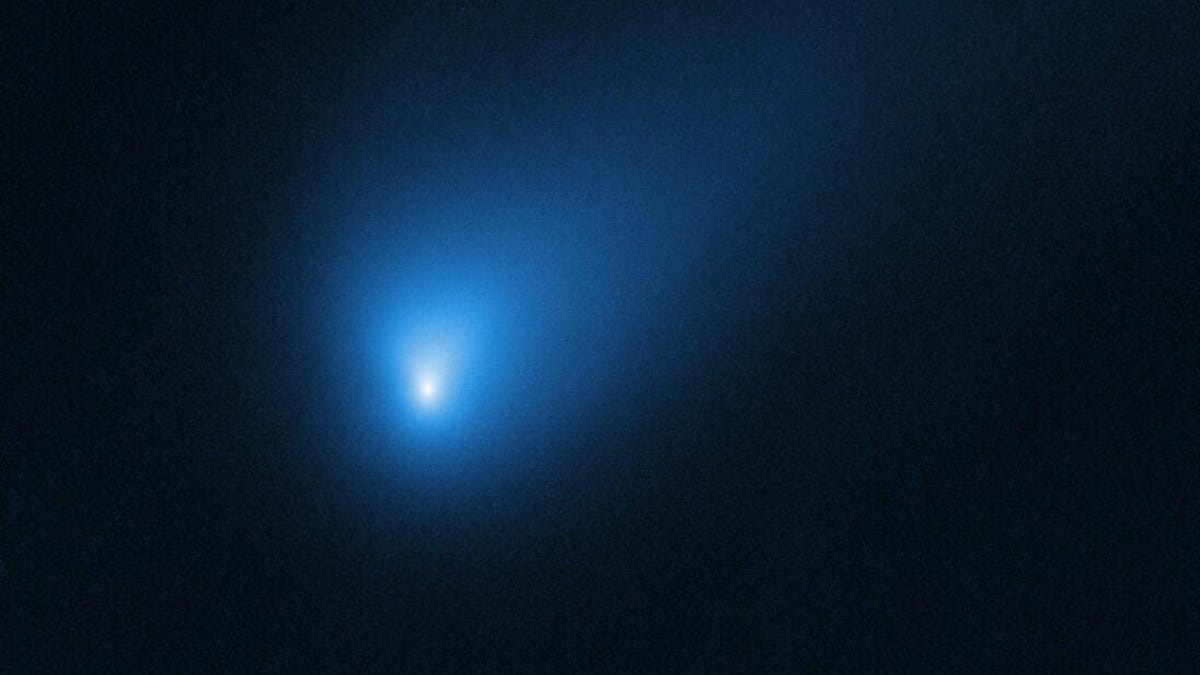NASA spots rare interstellar comet Borisov falling apart
A space snowball tossed our way from another star system has gone all melty and crumbly.

The Hubble Space Telescope got a good look at comet 2I/Borisov.
For the first time, we may be watching a comet from another solar system breaking apart after making a trip around our sun.
Comet 2I/Borisov is just the second ever interstellar object identified by astronomers as it passed through our cosmic neighborhood. The first was the bizarre object 'Oumuamua a few years earlier that was spotted when it was already on its way out of the solar system, leaving scientists little time to study it.
Borisov, on the other hand, was first observed last year as it approached the sun, giving astronomers months of opportunity to take a close look and determine that the object is, in fact, a comet from beyond our solar system. It also turns out to be a lot like comets native to our own solar system.
And now, it seems, Borisov's days could be numbered.
A note posted to The Astronomer's Telegram Thursday evening by a team of astronomers using the Hubble Space Telescope announced the "possible fragmentation" of the comet.
The scientists compared a series of Hubble images from Feb. 24 through March 28 to identify a small fragment of the comet's nucleus that has split off from the main body. The team writes that the fragment has an estimated upper size limit of less than 328 feet across (100 meters), or as much as 10 percent of the size of the original comet nucleus, according to NASA.
Comets often break up at some point as they approach or recede from the sun. The heat and radiation from the star cause the icy material holding the nucleus together to melt, and the whole thing just kind of falls apart. Borisov made its closest pass by the sun in December and has been heading back to deep space ever since, but the stellar flyby seems to have taken a toll.
Signs of Borisov's fate have been seen in recent weeks when astronomers observed outbursts from the comet, kind of like steam emanating from a boiling pot.
Hubble and astronomers will keep watch on Borisov as it likely comes apart more completely in the hopes they may learn more about what sort of elements the comet brought with it from a distant corner of the cosmos.

